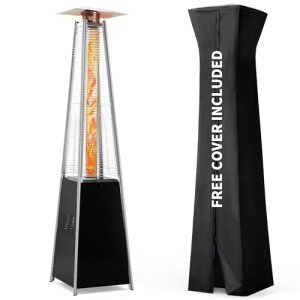Energy Efficient Fireplaces For Sale: A Comprehensive Guide
Recently, the focus on energy efficiency in home heating has magnified due to increasing energy expenses and increasing ecological issues. Energy-efficient fireplaces offer a sustainable alternative to traditional heating methods, providing warmth and atmosphere without the excessive fuel usage associated with traditional fireplaces. This article dives into the advantages of energy-efficient fireplaces, checks out the various types offered, supplies important buying tips, and answers frequently asked questions.
The Benefits of Energy Efficient Fireplaces
Energy-efficient fireplaces supply numerous benefits that extend beyond mere warmth. Here are some key advantages:
- Reduced Energy Consumption: These fireplaces consume less fuel while producing a comparable quantity of heat, making them cost-effective.
- Lower Emissions: With sophisticated technology developed to burn fuel more entirely, energy-efficient fireplaces substantially reduce harmful emissions.
- Boosted Home Value: Installing a modern, energy-efficient fireplace can increase a home's resale value and aesthetic appeal.
- Increased Heating Capacity: Many energy-efficient designs supply better heating coverage, focusing warmth in larger areas compared to traditional options.
- Design Versatility: Available in different designs, energy-efficient fireplaces can match any interior décor style.
- Alternative Fuel Options: Many energy-efficient fireplaces can work on sustainable resources such as wood pellets, bioethanol, or natural gas.
Kinds Of Energy Efficient Fireplaces
Picking the right energy-efficient fireplace for a home depends on individual choices, space restrictions, and heating needs. Below are the most typical types of energy-efficient fireplaces offered for sale:
| Fireplace Type | Description | Efficiency Rating |
|---|---|---|
| Gas Fireplaces | Direct vent fireplaces that utilize natural gas or gas for reliable heating. | 70-90% |
| Wood-Burning Stoves | Developed to burn wood efficiently, these stoves consist of secondary combustion systems. | 65-85% |
| Pellet Stoves | Use compressed wood or biomass pellets, immediately feeding them into the burn chamber. | 80-90% |
| Electric Fireplaces | Supply heat through electric coils; have the advantage of being easy to install and maintain. | 100% (Heating Element) |
| Bioethanol Fireplaces | Create flame through burning bioethanol; typically vent-free and easy to set up. | Varies by design |
Purchasing Tips for Energy Efficient Fireplaces
When acquiring an energy-efficient fireplace, one need to consider the following:
- Understand Heating Requirements: Determine the heating needs of your area. Assess Minimalist Fireplaces and insulation levels to choose the proper model.
- Check for Certifications: Look for models accredited by relevant requirements organizations (e.g., EPA, UL) that confirm their efficiency and security.
- Think About Local Regulations: Check your region's regulations regarding fireplace setup, particularly for wood-burning designs.
- Evaluate the Fuel Options: Determine the most cost-effective and convenient fuel source for your lifestyle, whether it be gas, pellets, electrical power, or bioethanol.
- Prioritize Features: Look for features like programmable thermostats, push-button controls, and fan systems that can further enhance efficiency and convenience.
- Seek Professional Installation: Proper setup is crucial for efficiency and safety. Always consult reliable installers familiar with energy-efficient designs.
Frequently Asked Questions About Energy Efficient Fireplaces
1. How do energy-efficient fireplaces decrease heating expenses?
Energy-efficient fireplaces take in less fuel and offer the exact same or frequently more heat than traditional designs. This efficiency translates to lower heating bills with time.
2. Are energy-efficient fireplaces easy to preserve?
Yes, while regular cleaning and maintenance are important, lots of energy-efficient designs are much easier to keep than traditional wood-burning fireplaces. Gas fireplaces usually need less maintenance.
3. Can I use my existing chimney with an energy-efficient fireplace?
Not constantly. Some energy-efficient models require chimney modifications or specific venting services. Speak with an expert installer to assess your scenario.
4. How do I choose in between gas and wood-burning fireplaces?
Think about aspects such as aesthetic appeals, ease of use, heating preferences, fuel schedule, and local emission regulations when deciding in between gas and wood-burning fireplaces.
5. Are electric fireplaces energy-efficient?
While electric fireplaces are 100% efficient at converting electricity into heat, they may not be the most cost-effective choice depending upon regional electrical energy rates. Nevertheless, they are low upkeep and easy to install.
Investing in an energy-efficient fireplace is a wise choice for property owners looking to lower their heating bills while making an ecologically friendly decision. As improvements in innovation continue, the variety and efficiency of energy-efficient fireplaces will only enhance, making sure that customers can enjoy convenience and warmth without guilt. By examining individual needs, comprehending readily available alternatives, and following skilled suggestions, house owners can discover the ideal energy-efficient fireplace that enhances their home and provides trustworthy, sustainable warmth for years to come.
Exploring the alternatives presently readily available in the market, integrated with notified decision-making, will result in an energy-efficient fireplace that satisfies both financial and aesthetic preferences. As energy efficiency becomes more crucial in modern living, these ingenious fireplaces stand as a testimony to the possibilities of combining style, comfort, and sustainability.

